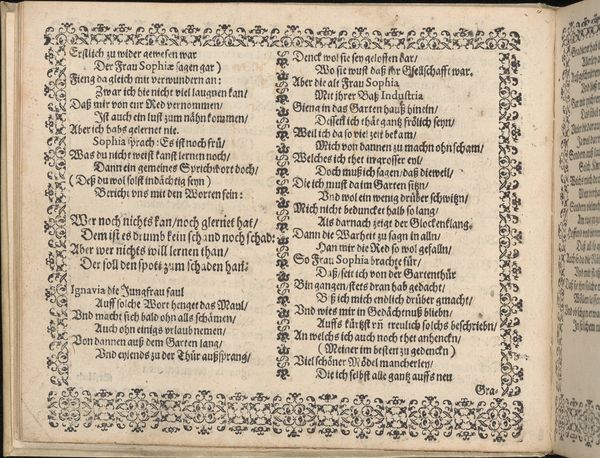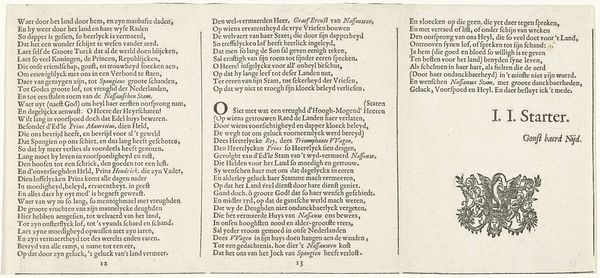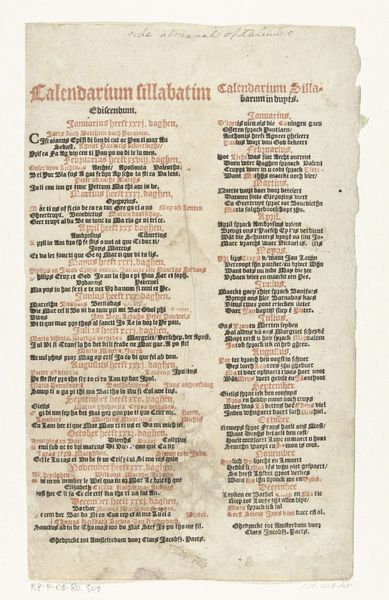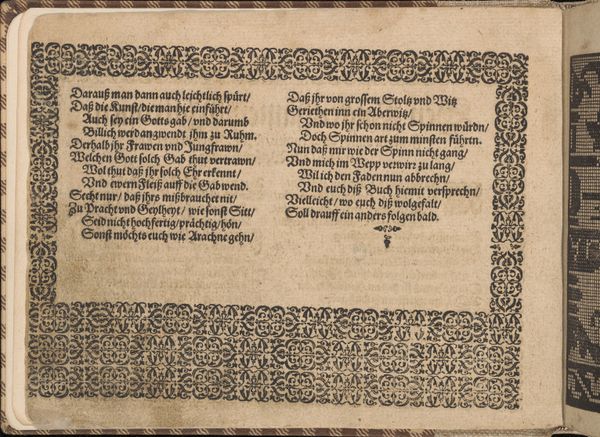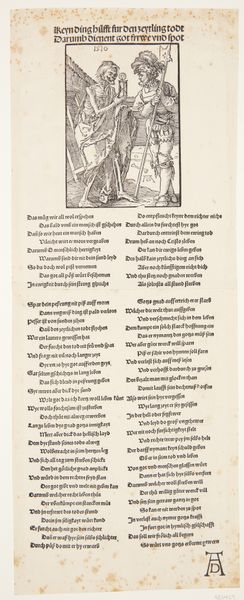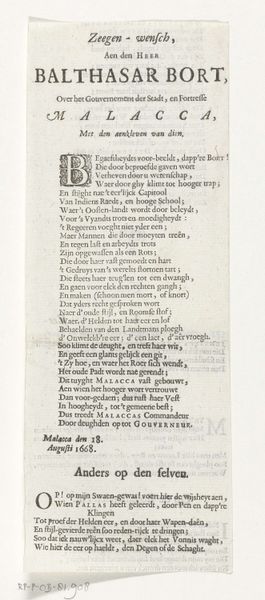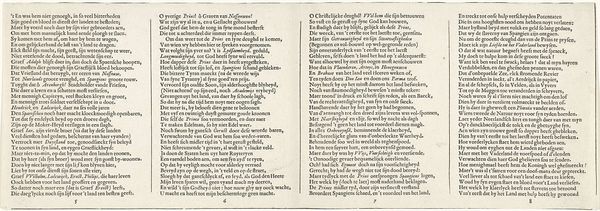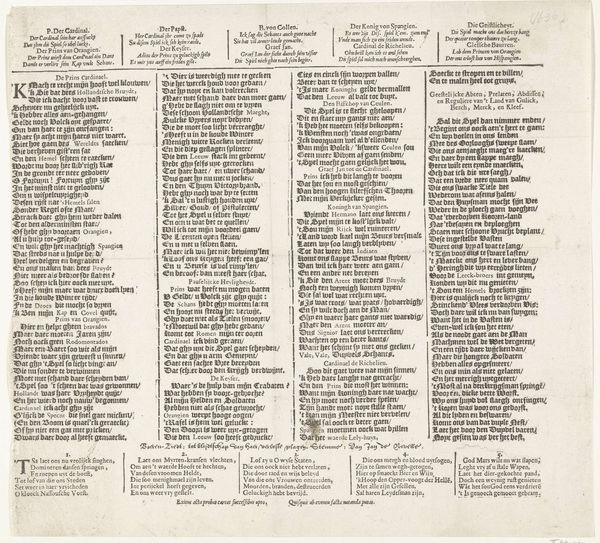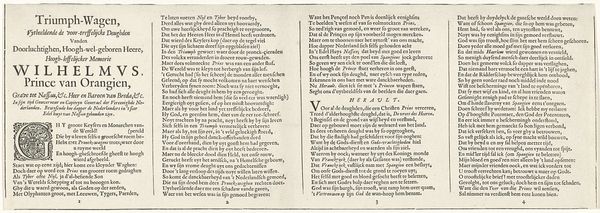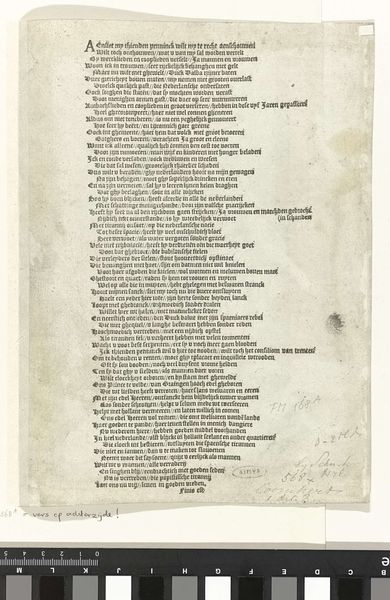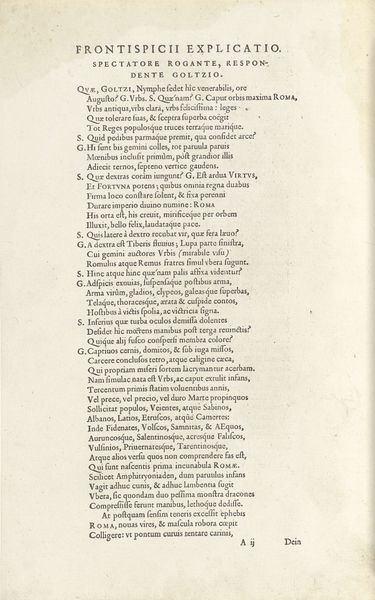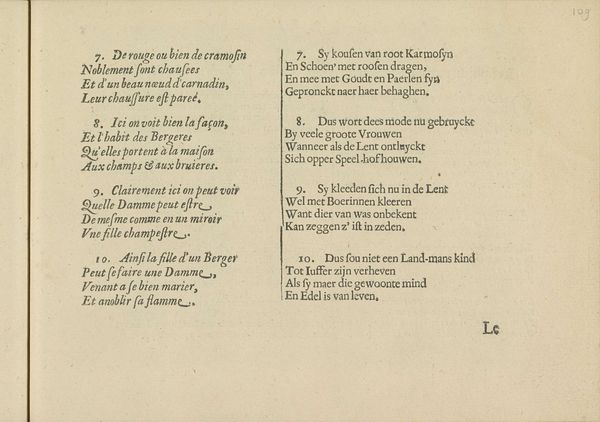
Dimensions: sheet: 9 3/8 x 6 1/2 in. (23.8 x 16.5 cm)
Copyright: Public Domain
Curator: This artwork is entitled "The Schoolmaster." It's attributed to Albrecht Durer, though its precise date is debated, somewhere between 1485 and 1528. We're looking at a graphic print, a striking example of Northern Renaissance typography on paper. Editor: My immediate reaction is constraint. The dense black lettering crowded onto the pale paper feels…suffocating. It gives off this feeling of strict rules and discipline, appropriate given the title. Curator: Absolutely. It embodies the era's emphasis on moral instruction. These aren't simply letters, they're guidelines—dictums—presented almost like a visual manifesto for proper behavior. Editor: A manifesto prescribing proper conduct. Look at the composition, two dense columns with almost no breathing room. It screams, "Follow these rules! No deviation!" It's fascinating how the visual design amplifies the message. Curator: Indeed. Dürer existed within a culture undergoing significant social and religious shifts. He, along with other printmakers, took up the cultural call to spread vernacular, printed teachings—a sort of proto-public service. The content serves to help believers stay true and grounded, especially in the face of religious unrest. Editor: You can see how this fits within a larger context of the German Renaissance and Reformation. The printing press democratized knowledge, but it also became a powerful tool for control and reinforcement of prevailing social norms. How subversive was this work really intended to be? Curator: That's the enduring question, isn't it? I wouldn't describe it as outwardly rebellious. Consider that in an era of massive religious schism, moral panic often translates into an authoritarian push for conformity. Durer may not have fully been endorsing this movement. We do see examples elsewhere of his personal crisis and reformist inklings as well. Editor: But here he creates a template for disseminating what could be seen as "safe" morality at the time, but still, it’s fascinating to examine art through this lens of social regulation. Curator: Ultimately, "The Schoolmaster," challenges us to decipher its intended public function: as reinforcement or reinvention. Editor: Exactly. Examining its legacy provokes a crucial re-evaluation. The weight of historical context gives it resonance that persists through the centuries.
Comments
No comments
Be the first to comment and join the conversation on the ultimate creative platform.
